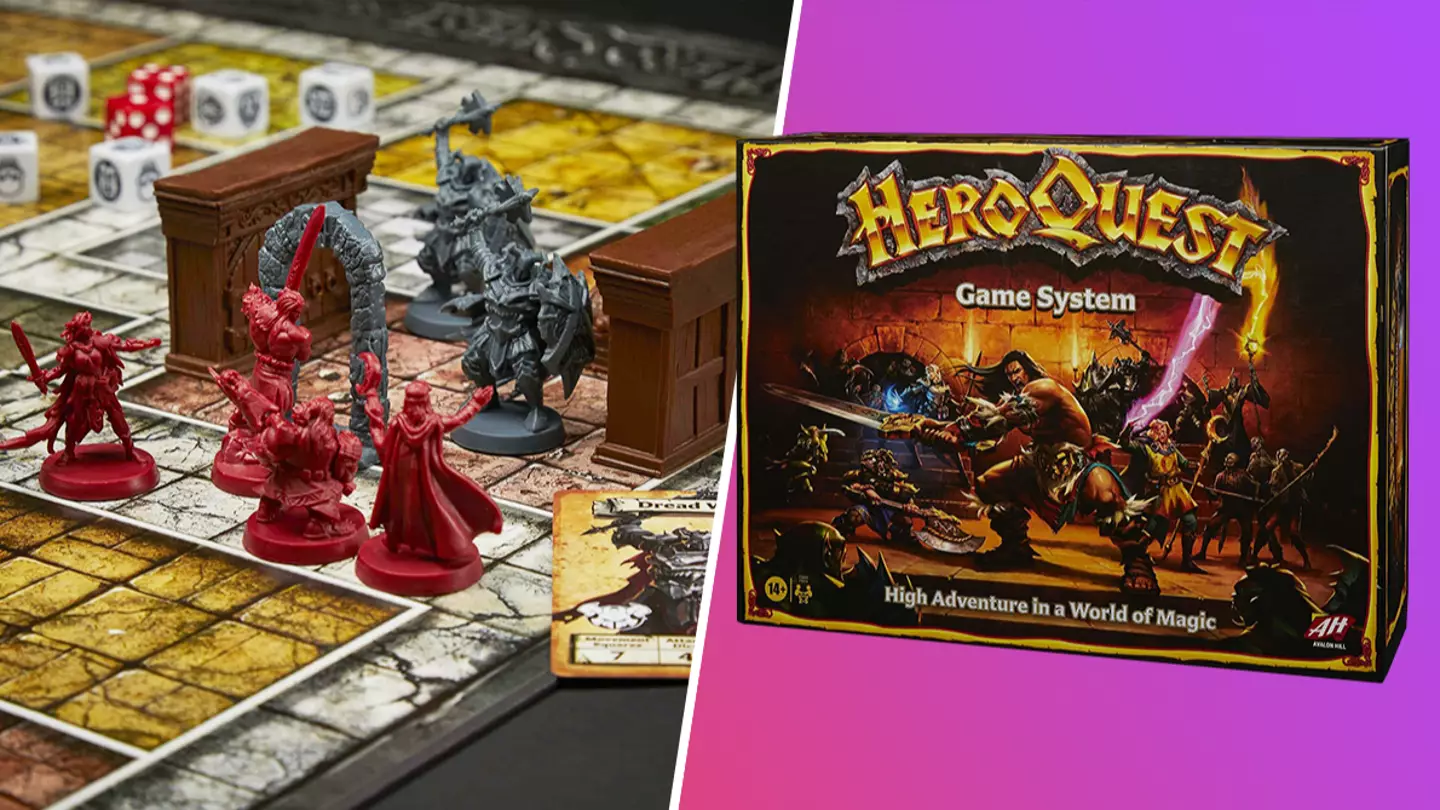
It’s not the receiving of the original HeroQuest I remember most vividly from my childhood, but the losing of it. It would have been Christmas 1990 or maybe 1991 that I unwrapped the heavily advertised fantasy board game, a co-creation between Games Workshop and Milton Bradley. I was so excited to set up all the pieces and play out the various quests, arranging all the orcs and the goblins, and the other monsters and all those lethal traps, so as to put up a fight against the four heroes: barbarian, elf, wizard and dwarf. I took the game to my uncle and aunt’s house not long after Christmas, and somehow got into an argument with my youngest cousin that was so bad that my parents took the game away from me, confiscating it for a fortnight. I’d had HeroQuest for hours, and just like that, it was gone.
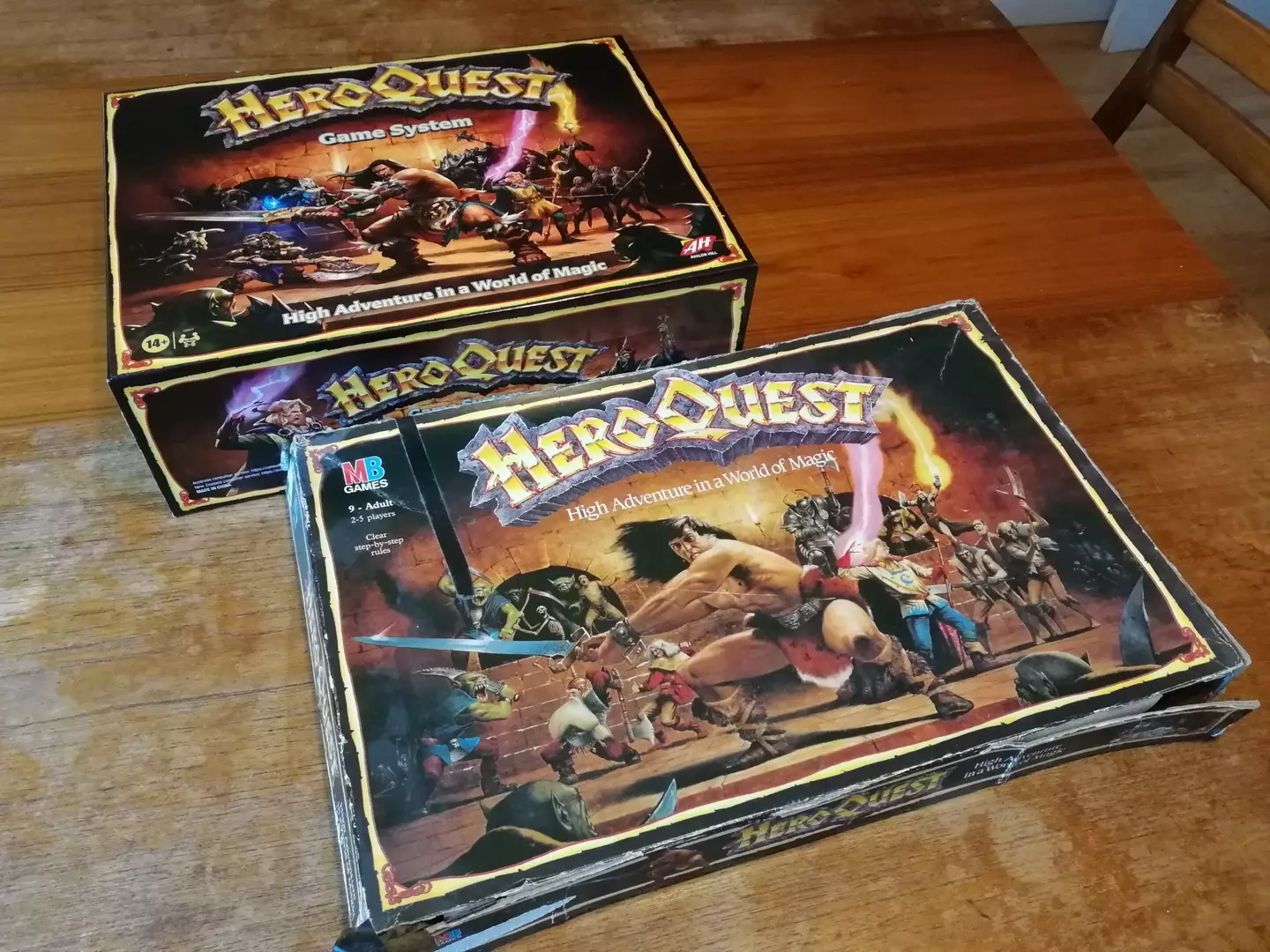
Thirty years (and a bit) later, and that same copy of HeroQuest is on top of my wardrobe (like right now, I can spin around in my chair and see it), recovered from my parents’ loft a few years ago to enjoy again with my own kids. And enjoy it we have - I’ve two sons who are very into stories of fantastical locations, gruesome monsters and magical adventures, so HeroQuest, with its Dungeons & Dragons-like aesthetic but streamlined gameplay structure, has been a terrific distraction for rainy afternoons where we’re trying to keep their eyeballs off screens. The problem was that anyone else wanting to get HeroQuest, to either revisit their childhood gaming or simply check it out anew, couldn’t - the game was out of print for ages and eBay prices were not kind. Until, that is, Hasbro - who picked up the HeroQuest trademark in 2020, via their Avalon Hill imprint - launched a crowdfunding campaign to revive it, aiming for a total of a million dollars and raising over $3.7 million. Suffice to say, the people really wanted HeroQuest back.
Watch Hasbro’s Gameplay Overview video for the new HeroQuest, below
And now, as an adult, this is one HeroQuest nobody is going to take away from me - which is fortunate for their backs, really, as 2022 HeroQuest comes in a larger, heavier box than the original release. This is a chunky package, and no mistake. Its front is adorned with art homaging the 1989 packaging, with the barbarian character up front, flanked by his allies and all manner of monstrous sorts. Immediately, you’ll see some small but notable differences - the elf is female presenting now, so too some orcs; the chaos warriors of the ‘80s have had a redesign, and are now known as dread warriors; and generally, the imagery is more evocative of a stylised fantasy MMO than the realism-chasing approach of before.
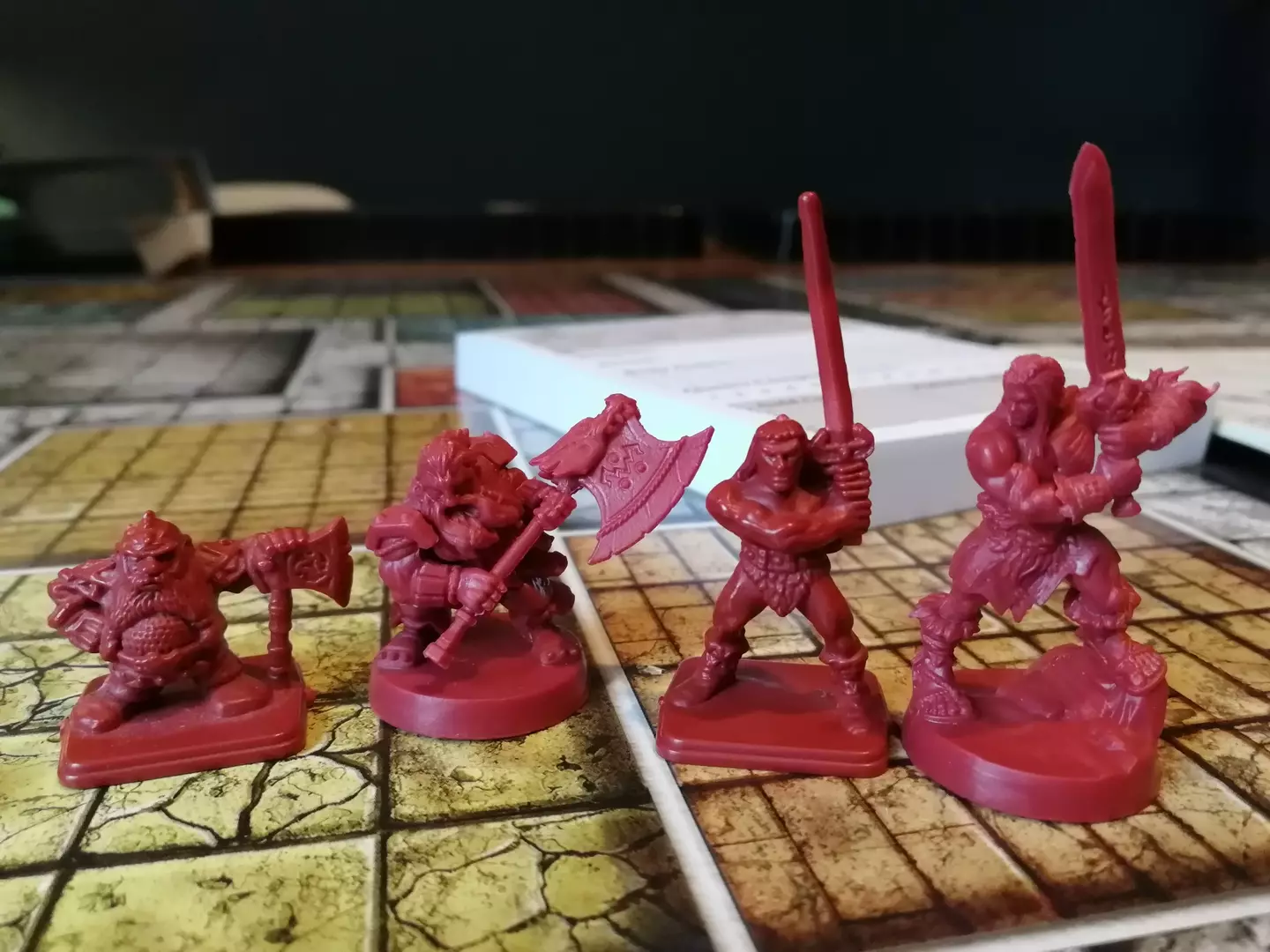
Flip it over and you’ll spy further changes on the box’s underside display: fimirs, a one-eyed monster type with a design akin to a larger orc, have been replaced by fish-faced abominations that behave in the same way; and the chaos sorcerer, a figurine used throughout the game to represent a number of different characters, is the dread sorcerer, serving the same function but with a different look. And that’s really the whole vibe of HeroQuest 2022 - this is the game you know given a makeover but ultimately kept the same in terms of how it plays (check the video above if you need further reassurances). The abomination and the dread warrior roll the same dice and have the same health and movement stats as their equivalents from 30-plus years ago. If you already know how to navigate your way through the Castle of Mystery, defeat the warlord Ulag, and recover the Spirit Blade, then you’ll be right at home from the moment you open the quest book.
“We didn’t want to change a good thing just for the sake of changing it,” Hasbro’s senior manager for global brand development and marketing, Patrick O’Rourke, tells me when I ask about what’s new, if anything. “HeroQuest is a unique experience, and resonates so much with the community for a reason.”
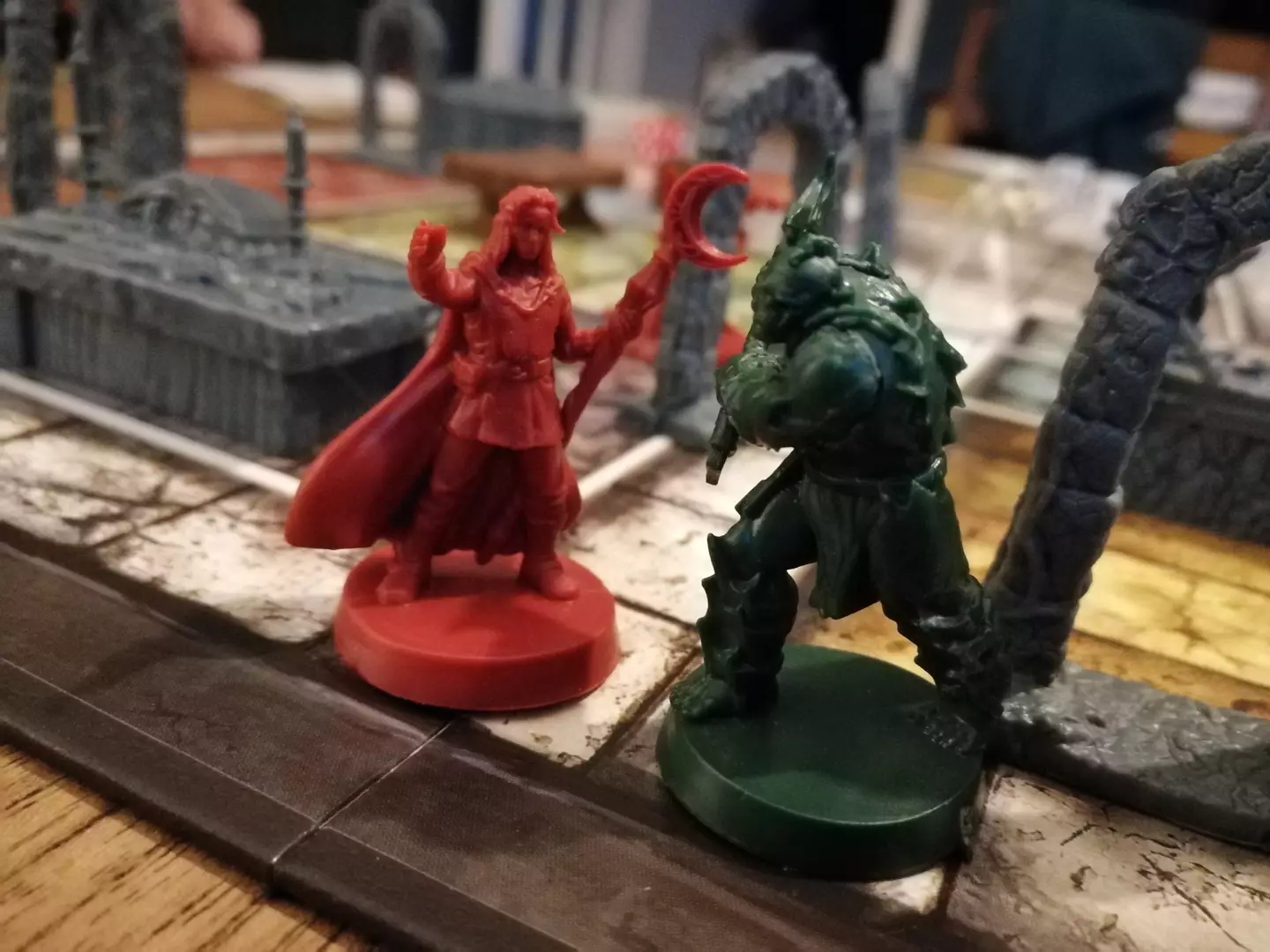
For those who don’t have a clue what any of the above means, though: HeroQuest is a game made up of a number of individual quests, or missions, which add up to a full campaign (expansion packs are available, offering further quests, which build into their own new campaigns). You don’t have to play the 14 quests in the provided book of them in the order they’re presented; but do so and they tell a kind of story, of a battle against powerful orcs, fiery mages and the Witch Lord, the game’s overall big bad. Each quest sees one player - HeroQuest supports two to five players - assume the rule of the evil wizard Zargon, who controls all the monsters on each board layout, alerts players to traps and treasure, and is basically in charge of populating the map with assets as the player characters encounter them (as each quest begins with our heroes in one room, with only its contents visible to them).
Other players pick a hero, each of whom has their own pros and cons - the elf is well balanced but can only cast one kind of magic (from fire, air, earth and water); the wizard weak of body but capable of unleashing devastating magical attacks; the dwarf is a little stronger than the elf but not as smart, but the most competent at disarming traps; and the barbarian is the tank option, the strongest pick but as mindless as the orcs he so easily cuts down. If playing with two or three participants, it’s advised that the hero players pick two characters each, so as to ensure that cooperation is possible, as many quests here are made much easier when faced as a team.
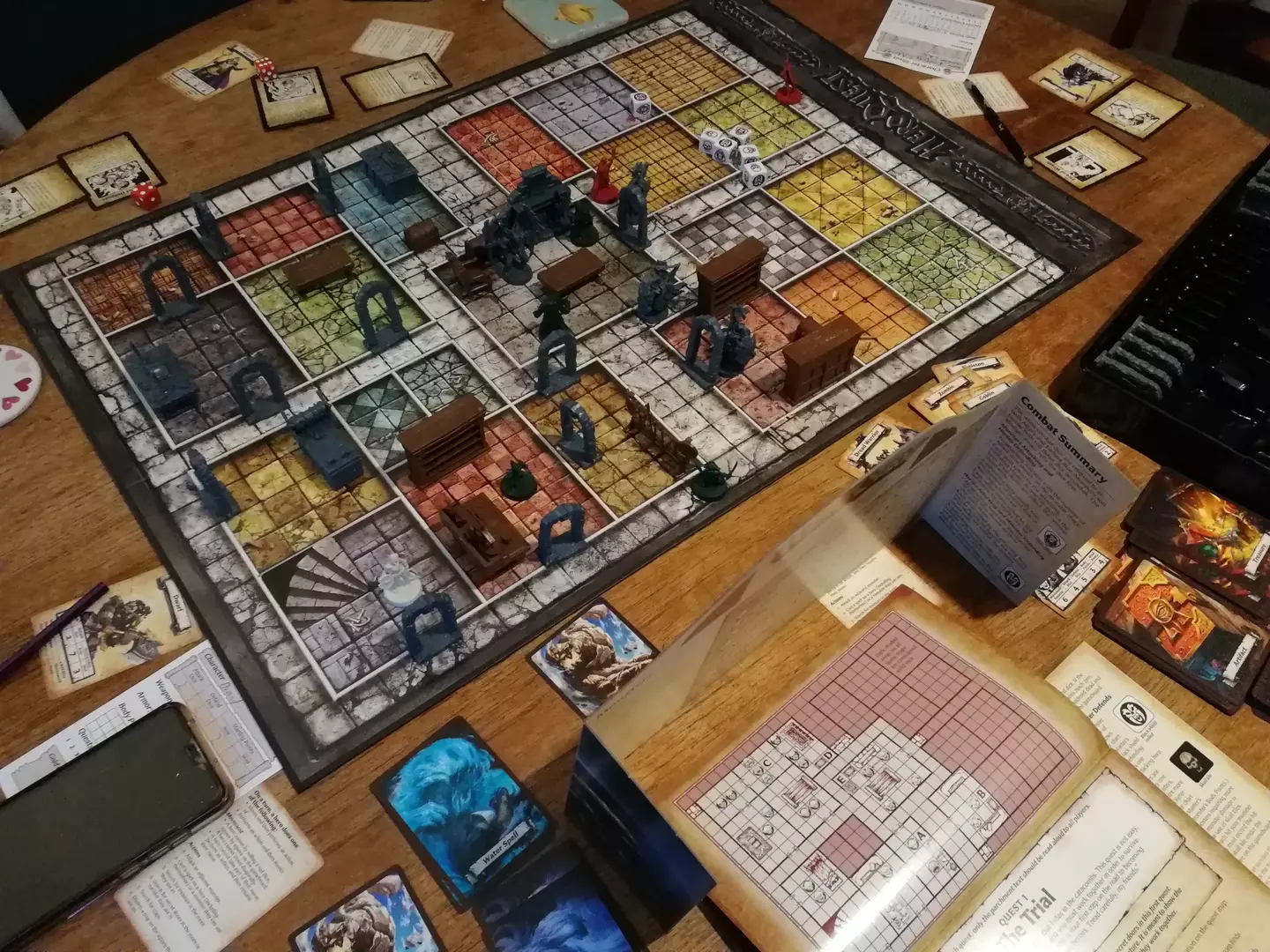
I’ll stop short of getting into the mechanics of each quest, but while each one has a different goal - kill a certain creature, rescue a lost friend, retrieve some important relic - the moment-to-moment play is fairly simple: you roll the red dice to move and when prompted to fight use the white combat dice - showing skulls to hit and shields to block - to determine the outcome. Characters have different numbers of white dice assigned to them, so the barbarian will always have the edge over a puny goblin, but should a stronger dread warrior come up against a wizard who's used all their spell cards, that’s going to be a rough time indeed. Some 'boss' monsters in later quests have access to dread spells, which weren't in the 1989 base game but were added (as chaos spells) in a later American expansion, and these represent a magical new twist for British players. Complete a quest and you can spend treasure you’ve found on acquiring new, stronger gear for your character; but should you die in a quest, you drop whatever you’ve collected, and it’s lost for good unless another player is in the same room as you when you fall, and they make it out alive.
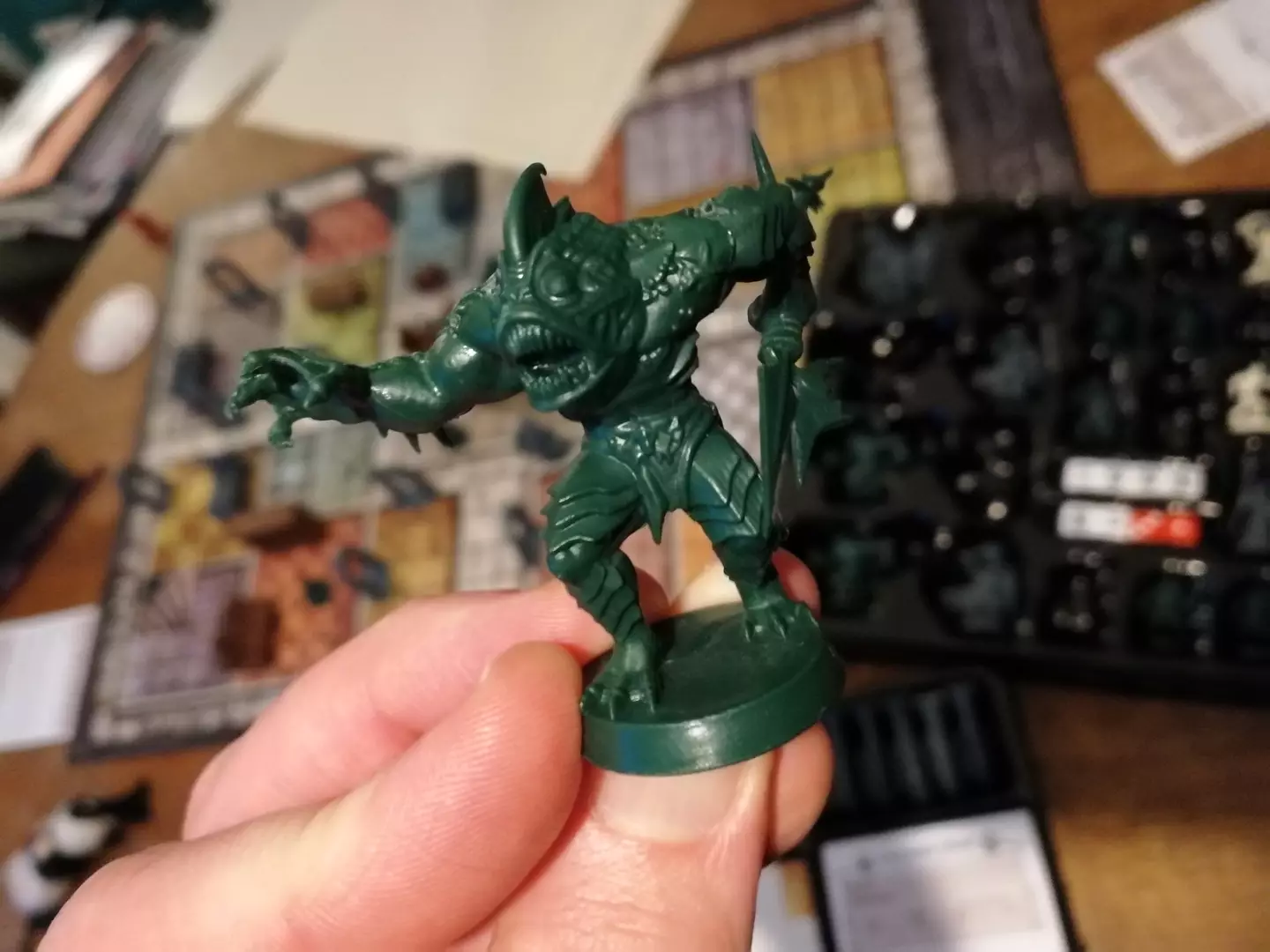
Quite quickly, it becomes more fun to play HeroQuest over several sessions, taking on the quest book in the order it is presented, building towards the ultimate end goal of defeating the Witch Lord. Death is never the end as you can start with a fresh character for the next quest, so long as one of your party completes the one you fell in. Some quests you’ll almost certainly fail the first time - even a complete team of four heroes can come unstuck if they explore in the wrong direction, as early as the very first quest indeed, which puts powerful mummies and dread warriors in your path should you open the wrong doors. But just like the Fighting Fantasy game books which were so popular at the time of HeroQuest’s release, once you’ve played and lost once or twice, you’ve learned the right path to take. Trial and error will always see you through, if you’ve the patience to go again, and again, in order to make success as painless as possible.
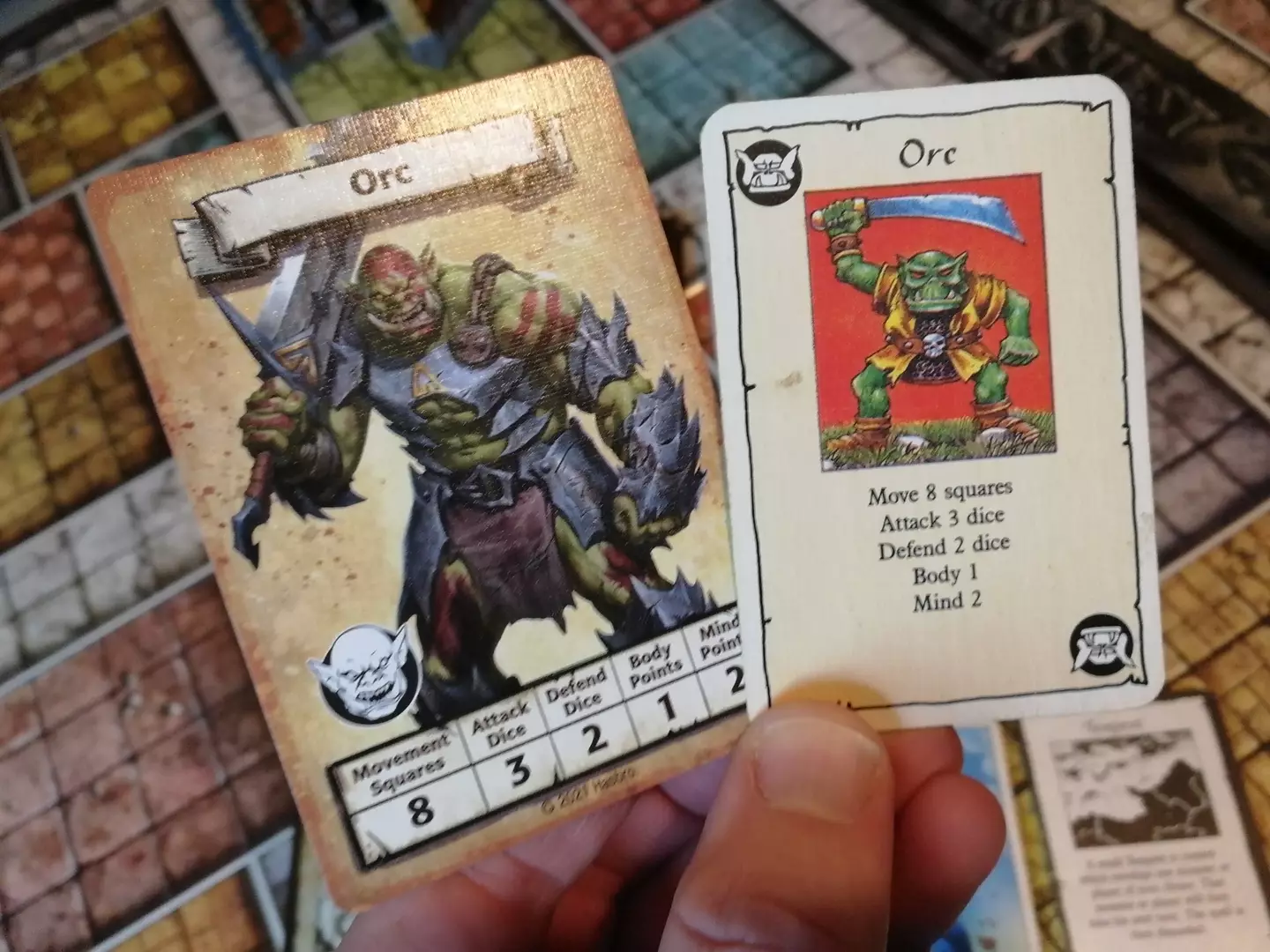
This new HeroQuest is heavier, bulkier, mostly due to changes made to the pieces: gone are the flimsy cardboard tables and treasure chests, bookshelves and torture instruments, replaced by solid plastic updates. Doors are solid plastic too, and the various cards are thicker and sturdier. Heck, even the dice are bigger. “By making the doors and furniture plastic, they can now be painted, and are much more durable,” O’Rourke tells me (and I know some of you can't wait to slap some colour on these moulds). “Like you, in my set the cardboard pieces were completely broken in some cases.” The figurines, heroes and monsters alike, are all cast in a semi-soft plastic which is probably better for avoiding unpleasant arm breakages and snapped weapons - so many of my older figures have gone that way - but does lead to some unsightly strain in thin areas, and in my set I found a few pieces were strained before I’d even popped them out of their cases.
What you get in hand ultimately isn’t quite the same as the crisp renders on the back of the box, with weapons bent where they should be straight and a few characters leaning at unlikely angles on their bases (my elf looks like they’ve had a few too many pints before descending into the dungeons). But none of the aesthetic shortcomings change how the game plays, which is the main thing - there’s no enjoyment dulled because an orc’s mace is a little bent out of shape. That said, with an RRP of £99.99 on the Hasbro Pulse website for the base HeroQuest - expansions are £24.99 each - you might hope for slightly better quality control on the miniatures than what you actually get here.
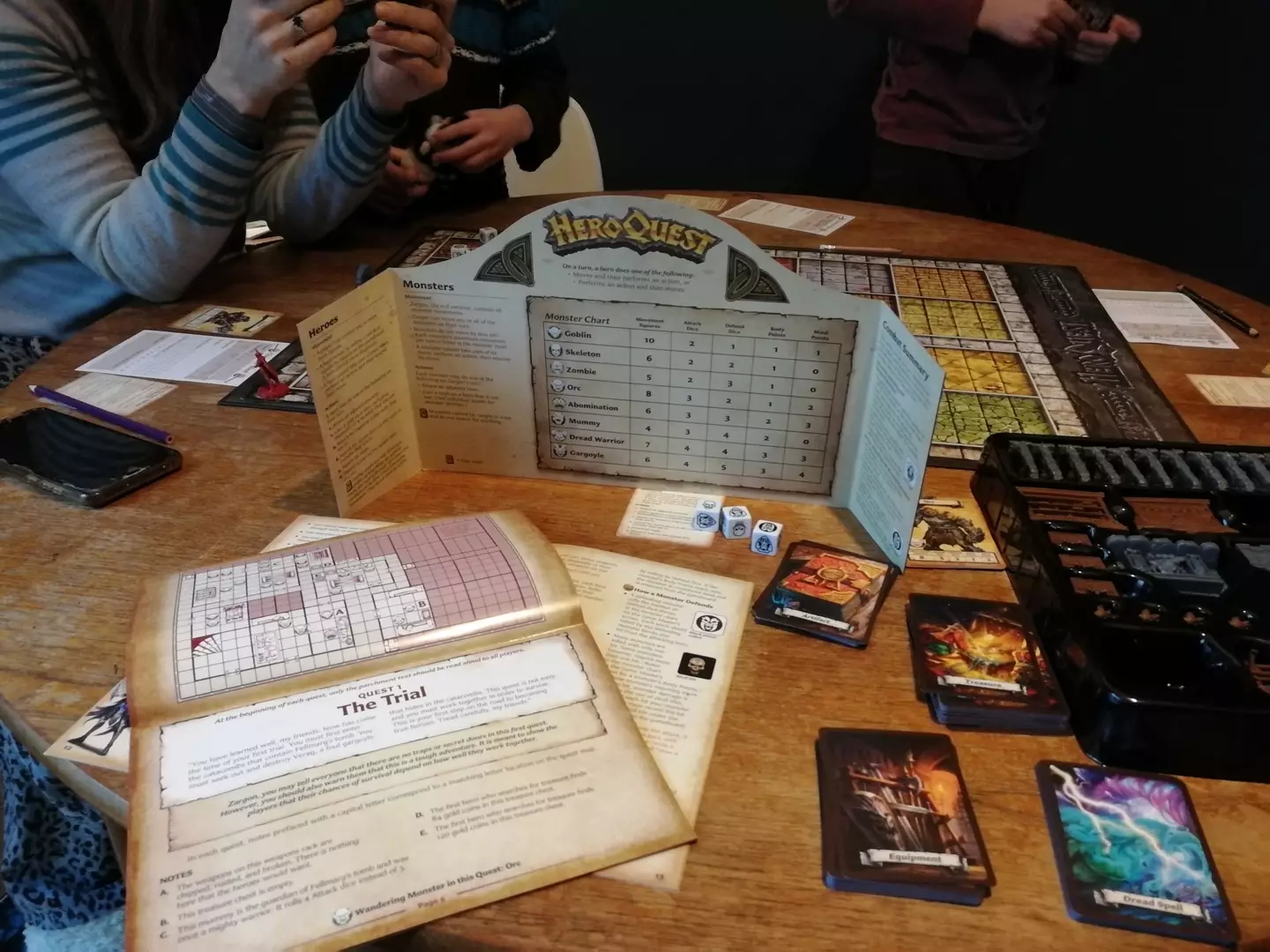
Before you cry foul at the pricing - which is a lot, no doubt about that - it’s worth bearing in mind that this base set, this game system as it says on the box, actually provides you with unlimited quest potential, and not just 14 missions before it’s quitting time. In the quest book is a blank map which you can scan and copy, and use to create your own quests - as many as you like, as complex or as creatively wild as you like. Wanna make friends with the monsters, Undertale style? You can. Build a suite of quests based on some other fantasy franchise and cast our heroes as favourite characters? Go right ahead.
While there are official expansion sets available, there’s also a wealth of fan-made options online right now, created with the 1989 game in mind but just as playable on this 2022 set. My kids have already started making their own maps for HeroQuest, and while none of them are as freeform, as completely unrestricted of possibilities as a good Dungeons & Dragons campaign, HeroQuest really does represent a great platform for getting started on telling your own stories, through play. It plays fast, and it plays clear.
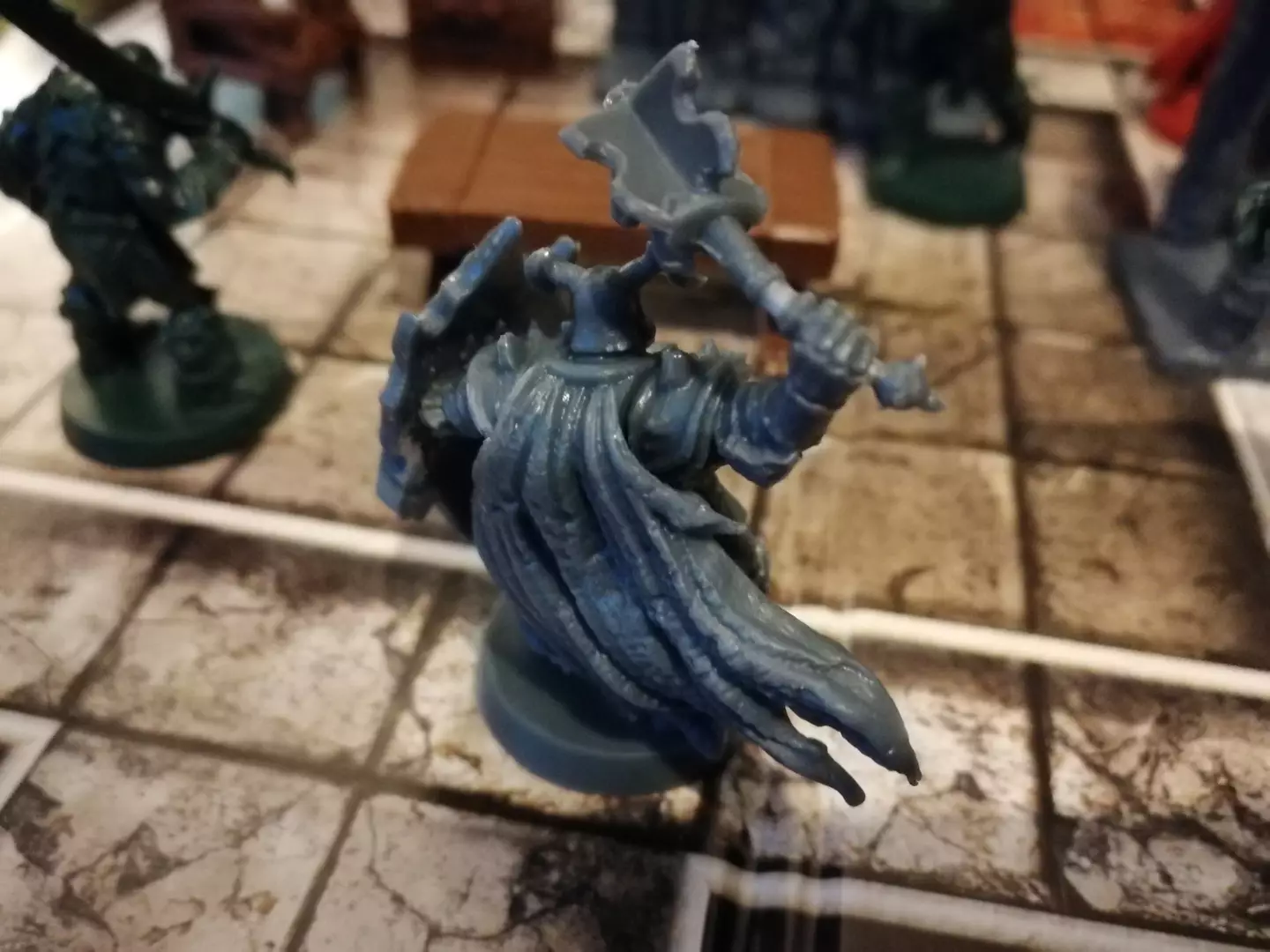
“There are many fantasy games out there,” O’Rourke says, “but the speed of combat and pure volume of monsters makes the HeroQuest experience different from a pen and paper RPG or other games in the market. Part of the fun of HeroQuest is that when it’s time to play, you can dive right in, and bring new players along with you.” Which is to say: this isn’t worse than more detailed equivalents, but is instead a high-action, easily learned system that swiftly lends itself to greater creativity way outside of its sizeable box.
When I think back to the cornerstones of what, I guess, inspired me to pursue a career where escapist play is such a central part of my every day, HeroQuest is right there, as important as video games, those aforementioned Fighting Fantasy adventure books, and the TV show Knightmare. It’s a little part of my personality, my cultural DNA, which naturally slightly skews my appreciation of this contemporary release somewhat. But when I step back from personal precedent and see HeroQuest for what it is, in 2022, I’m still met by a fascinating, engrossing, exciting board game. If you’ve done your time with it, and have moved onto more complicated games, cool. But HeroQuest is much better than a nostalgic trip through creepy catacombs and deadly dungeons - it’s a gateway to adventure that any player of any skill can step through, and return from amazed and thirsty for more. No wonder I missed it so strongly, when it was taken away.
The HeroQuest Game System and two expansion sets, Kellar’s Keep and Return of the Witch Lord, are available now - check local stockists for prices and availability, or click to Hasbro Pulse for more details. The retail Game System does not include crowdfunding reward-tier perks, and Hasbro has no plans to make these available more widely in the future. HeroQuest Game System used for this coverage supplied by Hasbro.
Featured Image Credit: HasbroTopics: Retro Gaming, Board Games
